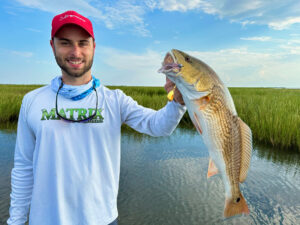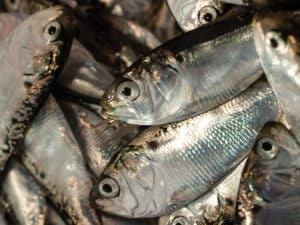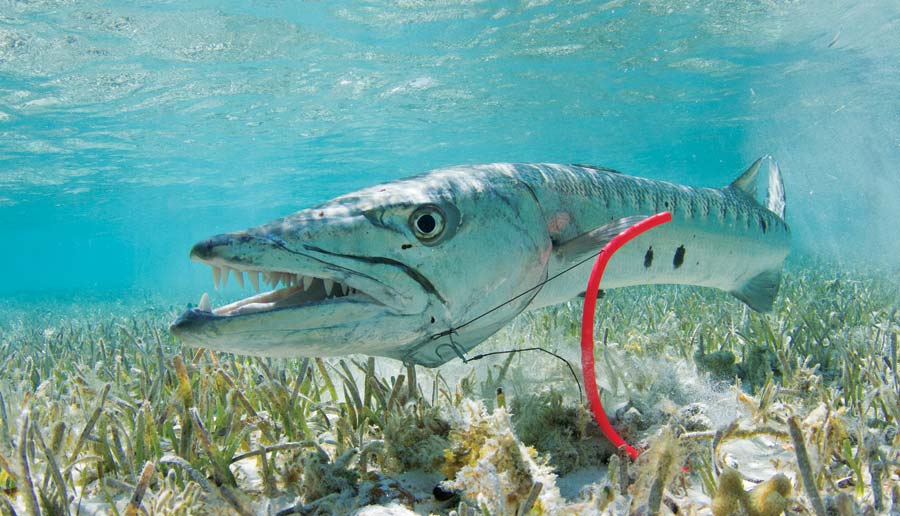
The summer sun blazed down from an azure-blue sky as we drifted the flat near Key West, Florida, looking for permit. We hadn’t yet stumbled across any elusive sickle-tails, but peering to the edge of a sandy bar, two long shapes holding fast in the current caught my attention. Definitely not permit — but definitely something.
“Cudas,” deadpanned Capt. Mike Cyr from the poling platform. “Wanna have some fun?”
I quickly stashed the live-crab rod, grabbed a spinner rigged with a big tube lure and sent out a nice long cast ahead of the fish.
Immediately, one of the barracuda accelerated to the lure and smashed it with a recklessness that gives me shivers to this day. It rocketed out of the water like a torpedo and then headed to Timbuktu, with my reel screaming so loudly, I thought the drag might fail.
As I shrieked with joy, it suddenly dawned on me: No permit could possibly do what that barracuda had just done.
“You should see the flats a few months from now,” said Cyr as we maneuvered the fish boat-side. “They’re all covered up with these things.”
And so I decided right then and there that I had to come back.
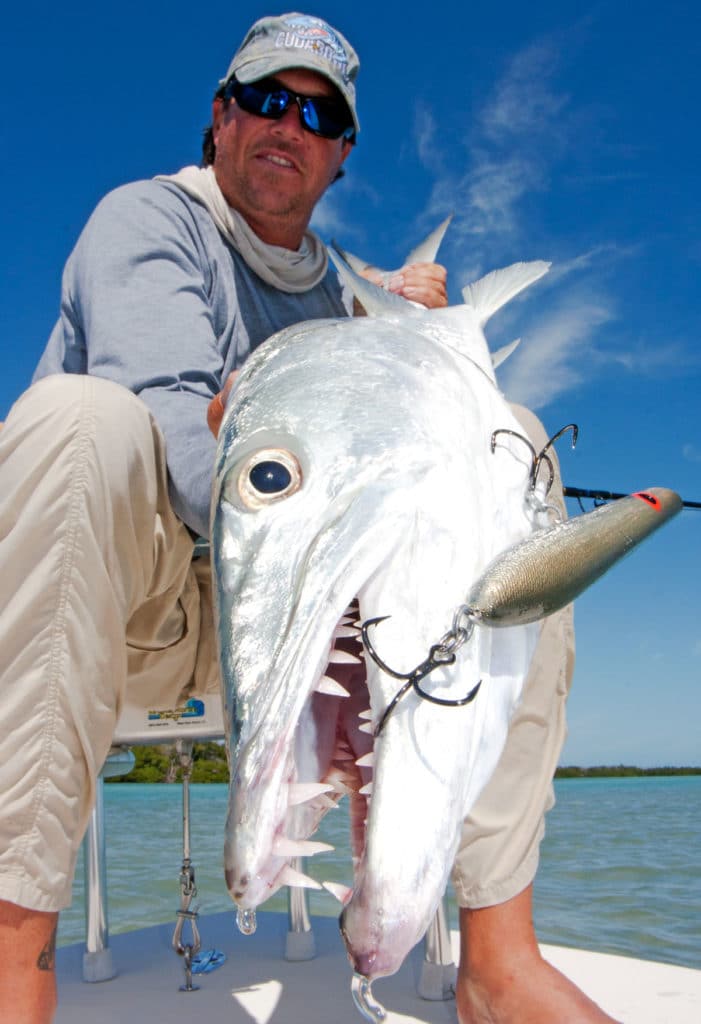
Wolf Packs of Winter
It’s an ironic fact that while the great barracuda (Sphyraena barracuda) is one of the most recognizable game fish among those who have never even held a fishing rod, they are often written off as “junk fish” by many saltwater anglers.
Don’t you believe it!
Yes, Mr. Barracuda has a nasty habit of showing up at the most inopportune time, usually to severe some poor fish from the line of an unsuspecting angler. But each winter and well into spring, a phenomenon occurs throughout the Florida Keys, the Bahamas and most of the Caribbean that changes the hearts and minds of even the most hardened cuda antagonists.
In short, cudas take to the flats, and in doing so, they morph in a strange sort of way into a supersonic game fish.
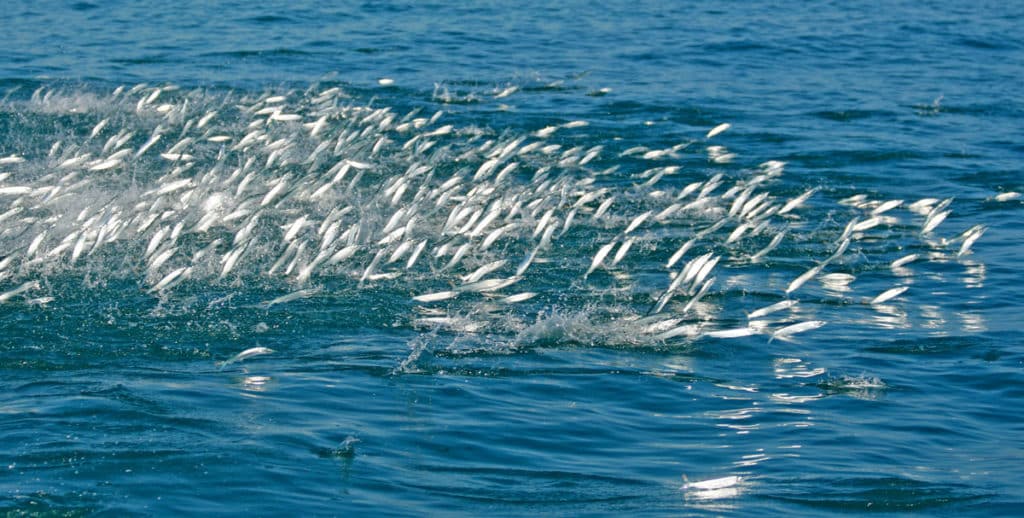
“As cold fronts move through,” explains Capt. Justin Rea of Sting Rea Charters in Key West, “you’ll see big packs of them coming onto the flats. We call them wolf packs. Usually, there are a half-dozen to a dozen or so fish, all looking for a nice warm spot to lay up.”
In addition to warmth, these barracuda are looking for something else: prey. They move onto the flats primarily in pursuit of ballyhoo which, in the Keys, flood in from the cold, deeper waters of the reef in the Atlantic.
In fact, an entire food chain develops in the shallows with the seasonal movements of these ballyhoo.
“The barracuda come for the ballyhoo, and the sharks come for the barracuda,” says Cyr, a Key West native who runs C Hawk Charters. “It’s Mother Nature at work.”
This vast cycle of life that blossoms in the shallows usually begins after the second or third cold front of winter, as water temperatures drop into the 70- to 75-degree range.
Timing on the calendar largely depends on the arrival of the fronts and where exactly you’re located in the Keys or Bahamas. But the cuda bite generally begins to fire up as early as mid-November, and for all intents and purposes, most of the flats throughout the regions are well populated with hungry fish by Christmastime. January, February and March are prime time for hot action, and barracuda will often continue snapping ferociously into early April.
Ferocity is the key word here, as the barracuda transforms from what was once a fish-stealing nuisance in its warm-weather deepwater hangouts into one of the coolest species you can possibly target on the flats with light tackle.
“Bonefish get a lot of press for their speed, but they can’t compare to a 20-pound barracuda on the flats,” says Cyr. “It surprises a lot visiting anglers, quite frankly. But all the guides already know — it’s one of our favorite times to fish the flats here.”
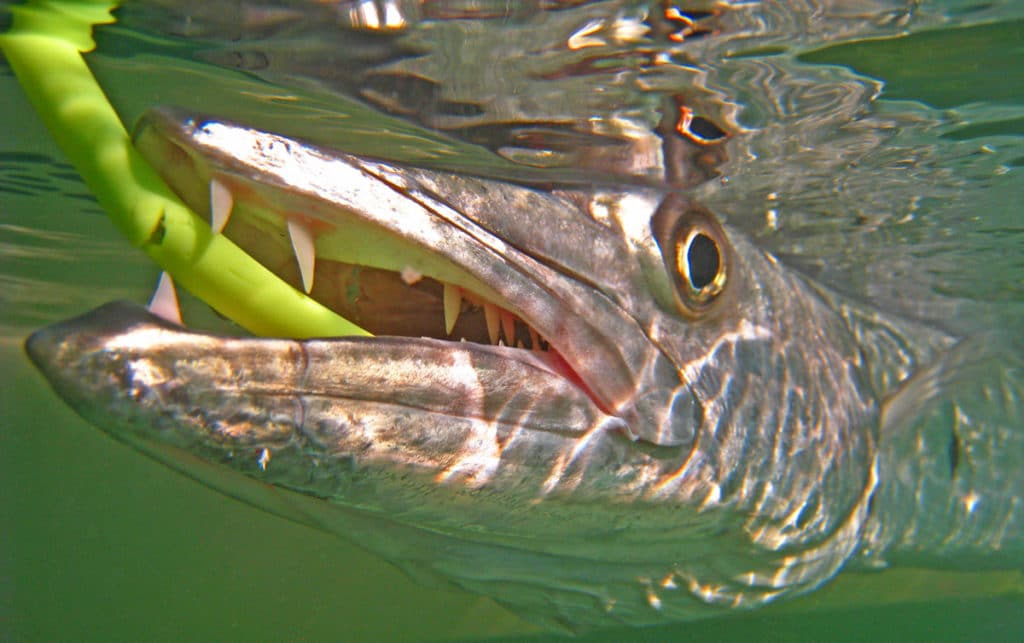
One Hundred Shots A Day
That’s quite a testament, given that the “big three” of the flats — tarpon, bonefish and permit — are generally long gone from the Keys, in terms of numbers, during these colder months.
As I learned firsthand, it’s certainly possible to encounter a lone cuda or two in the skinny water during warmer times of the year when these other game fish are present. But things become very different in the winter and spring.
“The numbers will just blow your mind,” says Cyr. “In a half-day trip, you can have 50 to 100 legitimate shots.”
Most of these fish hover in the 10- to 15-pound range, with a 30-pounder being an exceptionally large fish. Still, there’s always the possibility of running into a true giant.
Capt. Greg Vincent, co-owner of H2O Bonefishing in Freeport, Bahamas, tells of a laid-up wintertime barracuda that his business partner hooked on a fly in only two feet of water. At first, they thought it was a tarpon because of its size.
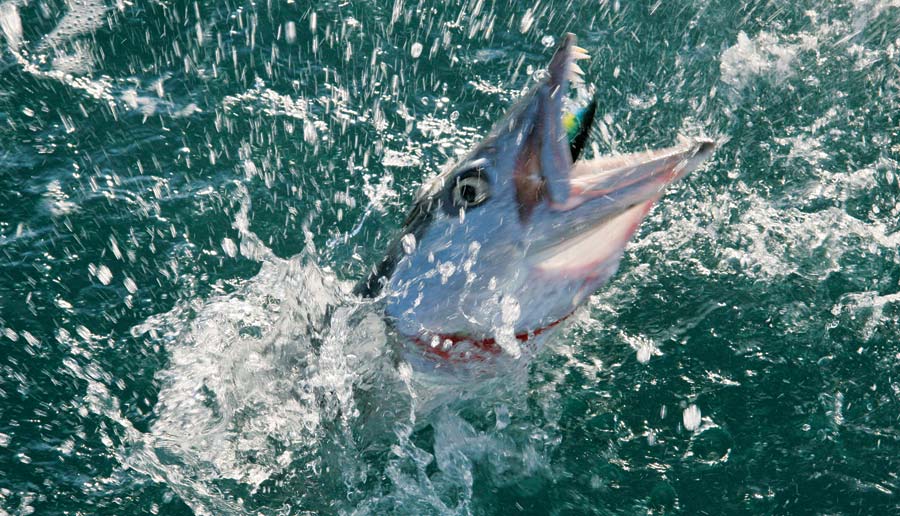
Then the fish greyhounded, revealing its true identity, before slicing through the leader with its teeth. “We reckon it was in the 50- to 60-pound range,” says Vincent. “Of course, that was a rare exception in terms of size.”
That particular barracuda was alone, which is generally the rule for these fish on the flats. Yes, they do move into the shallows in the “wolf packs,” but then they disperse, each fish finding its own spot to hole up to wait for an unsuspecting ballyhoo or other morsel to swim by.
Enter the angler.
There are basically two ways to fish for these laid-up cuda: sight-casting or blind-casting. Effective tools of the trade for either technique include tube lures in loud colors, such as fluorescent yellow or red, or large topwater plugs, like Yo-Zuri Sashimis, Heddon Zara Spooks, Rapala X-Raps or Bomber Badonk-A-Donks.
Capt. Skip Nielsen, a renowned Islamorada guide says he prefers fishing just after a cold front, as the sun is bright and the strong northerly winds calm down. Where does he look?
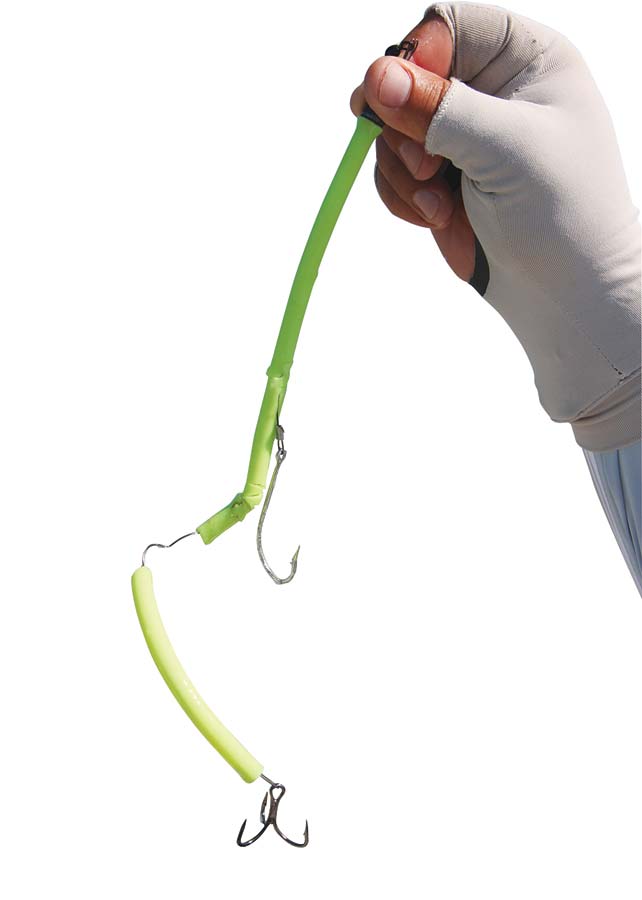
“They love to warm up on an incoming tide on flats that have been heated during low tide,” Nielsen says.
Such a situation calls for sight-casting, in which an angler casts to an individual fish that he or the guide spots. The idea is to place the offering 8 to 10 feet in front of the direction the fish is facing.
In addition to plugs and tube lures, Nielsen particularly likes to use frozen, thawed-out ballyhoo rigged with two hooks in a Ha-Ha fashion. “Worked in a jigging or darting motion, they can outperform plugs and lures, and really get the job done,” he says.
But that’s not to say fishing cannot be equally good when it’s cloudy or windy. Blind-casting is the name of the game in conditions like this, and tube lures are ideal, as they effectively cover tons of ground.
Blind-casting tube lures can also provide for some absolutely jarring strikes, says Cyr, as anglers generally don’t see the fish coming until the strike. “It’s one of the most exciting ways to fish cudas,” he says.
Two Keys: Distance and Speed
But just because these fish are ravenous once they commit to a lure on the flats doesn’t mean they’re dumb. On the contrary, barracuda in skinny water can be downright tough. Cast too close to a sighted fish, and you’ll alarm him. Don’t cast close enough, and he won’t see it. Then there’s the business of coaxing a fish into striking, which can be intimidating, especially for beginners. And on top of all that is the fact that barracuda on the flats are often downright wary critters.
“They’ll sometimes follow a lure a long way before hitting, but if they get too close to the boat, they’ll feel your presence, and it’s game over,” says Cyr. “That’s what makes it so challenging.”
How to combat this? Memorize the first of two critical elements for cuda fishing: Long casts rule.
“The longer you cast,” says Cyr, “the more chances you’ve got of a barracuda seeing your lure, and the better your chances of not spooking the fish. If I have two people on the boat, whoever is casting farther is going to get the most strikes, especially when blindcasting.”
The proper tackle can help with this. Most experienced guides use a 7½-foot medium-action spinning rod capable of tossing a lure a long way. High-speed reels should be spooled with 15- to 20-pound braid, and anglers are wise to use a 4-foot section of 20- to 30-pound fluorocarbon and a 6-inch trace of wire leader attached to the lure.
Ben Secrest, vice president of sales and marketing at Accurate Fishing Products, suggests using spinning reels with a 6-to-1 gear ratio. But beyond that, it’s also important to engage the reel quickly at the very end of the cast.
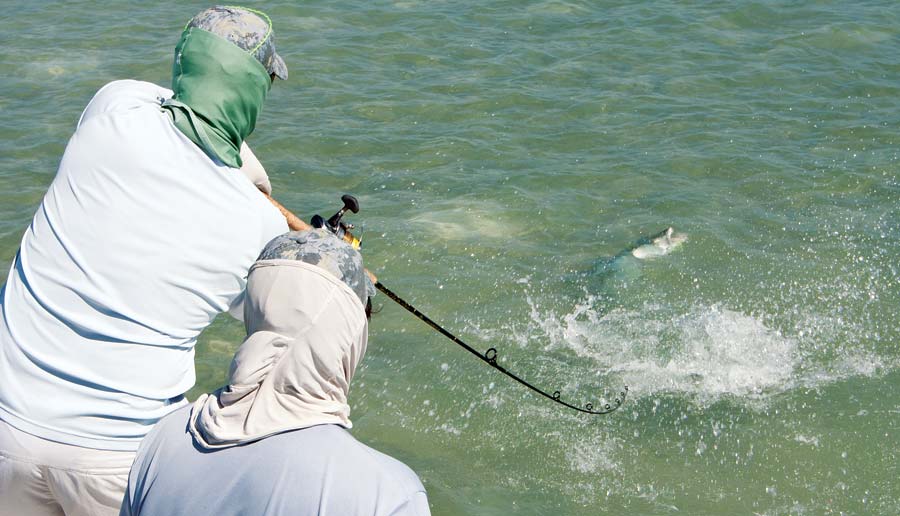
“You want to close the spool just before the lure hits the water,” Secrest says. “That way, as soon as it touches down, you’re tight and are retrieving. I learned this tuna fishing with plugs, but it applies to barracuda as well. If you don’t do this, you have to wind at least six or eight strokes to come tight, and by that time, it’s possible that a fish has pounded the lure and spit it back out.”
Which leads into the second crucial point for cuda fishing: You can’t retrieve fast enough.
“The thing about a barracuda is when they’re chasing something, that something never slows down,” chuckles Rea. “Not with those big teeth chasing it! They always go faster, so you should always retrieve faster when in doubt. And always away from the fish — never toward it.”
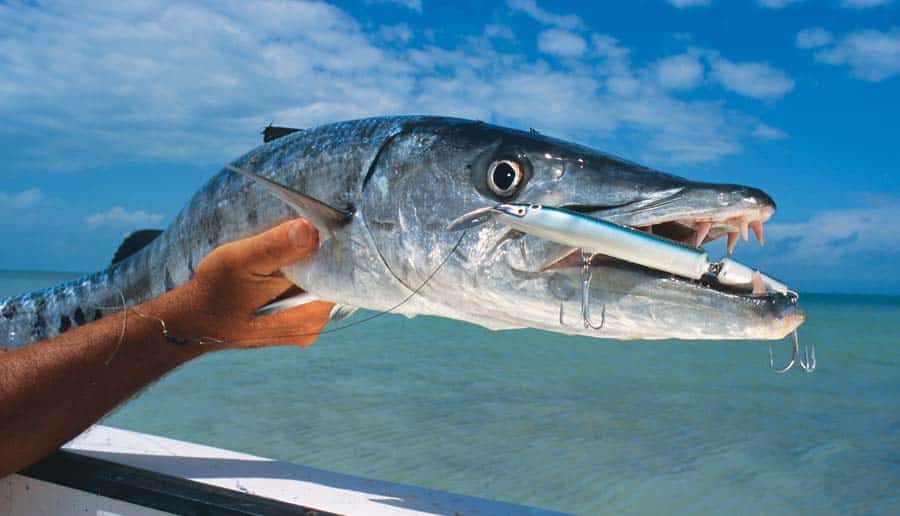
This holds true for working lures in general. Retrieve them fast! It might be tiring on the forearms, but it’s important to get tube lures waking and bubbling just under the surface. When using topwaters, try mixing up your retrieve — walk the dog a bit, then rip it quickly on the surface. Doing so can help you figure out what they want (though, usually, it’s fast).
When a fish advances on a lure, “the key is to maintain that natural predator/prey relationship,” says Vincent. “It’s about reading the fish’s behavior. Once he comes at your lure, you’ve got to move it the way he wants to eat it.”
For years, Cyr has relied on a trick of sweeping his rod violently to the side when a cuda is in hot pursuit of an artificial. He’ll even do this right next to the boat, as long as the fish hasn’t spooked.
“I’ll holler: ‘Sweep! Sweep! Sweep!’” he says. “It makes the lure look injured, and it drives them crazy. That darting action is usually too much for them to stand, and it makes for a really fun strike, especially when it’s close to the boat. Then it’s just hold on, because you’re in for a treat.”
Amen.



